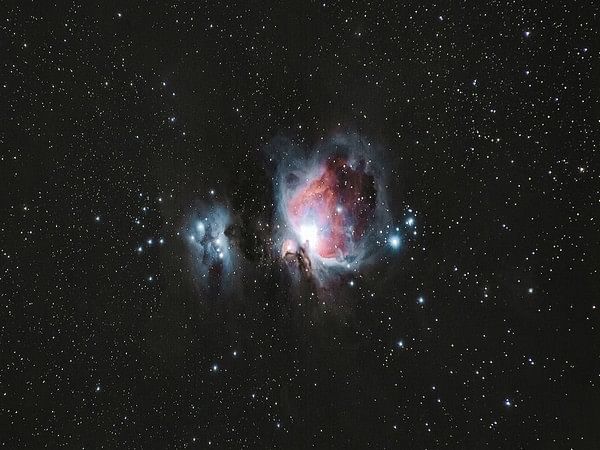Orlando [US], November 5 (ANI): One of the oldest rocky and icy planetary systems discovered in the Milky Way, according to astronomers led by the University of Warwick, is the oldest star in our galaxy that is accreting debris from orbiting planetesimals.
They come to the conclusion that a weak white dwarf that is 90 light years away from Earth and the remnants of its orbital planetary system are more than 10 billion years old after publishing their findings in the Monthly Notices of the Royal Astronomical Society on November 5.
Most stars, including those like our Sun, will eventually turn into white dwarfs. A star that has used up all of its fuel, shed its outer layers and is currently contracting and cooling is known as a white dwarf. Any planets in orbit will be disturbed and, in some circumstances, destroyed during this process, and their debris will be left behind to accrete onto the surface of the white dwarf.
Two peculiar white dwarfs seen by the European Space Agency’s GAIA space observatory were modeled for this study by a team of astronomers led by the University of Warwick.
The majority of stars, including stars like the Sun, will eventually collapse into white dwarfs. A white dwarf is a star that has used all of its fuel, shed all of its outer layers, and is currently contracting and cooling. Any planets in orbit will be disturbed and maybe destroyed during this process, and their debris will be left on the surface of the white dwarf to accrete.
The European Space Agency’s GAIA space observatory discovered two peculiar white dwarfs, which the team of astronomers, led by the University of Warwick, simulated for this study. Both stars are contaminated by planetary material; one has been determined to be remarkably blue, while the other is the more typical red.
By analyzing the star’s light at various wavelengths, spectroscopy can identify the elements and their concentrations in the star’s atmosphere when those elements are absorbing light at specific wavelengths. The scientists made WDJ2147-4035 the oldest metal-polluted white dwarf identified to date by analyzing the spectra from the star and finding the presence of the metals sodium, lithium, and potassium as well as speculatively detecting carbon accreting onto the star.
WDJ1922+0233, the second “blue” star, is only marginally younger than WDJ2147-4035 and was contaminated by planetary material with a makeup close to the continental crust of Earth. The scientific team came to the conclusion that WDJ1922+peculiar 0233’s mixed helium-hydrogen atmosphere is what gives it its unusually blue color despite its cold surface temperature.
The WDJ2147-4035 red star’s debris, which was discovered in its otherwise nearly pure-helium and high-gravity atmosphere, came from an ancient planetary system that endured the star’s transformation into a white dwarf, leading astronomers to claim that this is the oldest planetary system around a white dwarf ever found in the Milky Way.
Lead author Abbigail Elms, a Ph.D. student in the University of Warwick Department of Physics, said: “These metal-polluted stars show that Earth isn’t unique, there are other planetary systems out there with planetary bodies similar to the Earth. 97% of all stars will become white dwarfs and they’re so ubiquitous around the universe that they are very important to understand, especially these extremely cool ones. Formed from the oldest stars in our galaxy, cool white dwarfs provide information on the formation and evolution of planetary systems around the oldest stars in the Milky Way.”
“We’re finding the oldest stellar remnants in the Milky Way that are polluted by once Earth-like planets. It’s amazing to think that this happened on the scale of ten billion years and that those planets died way before the Earth was even formed.” (ANI)
This report is auto-generated from ANI news service. ThePrint holds no responsibility for its content.



